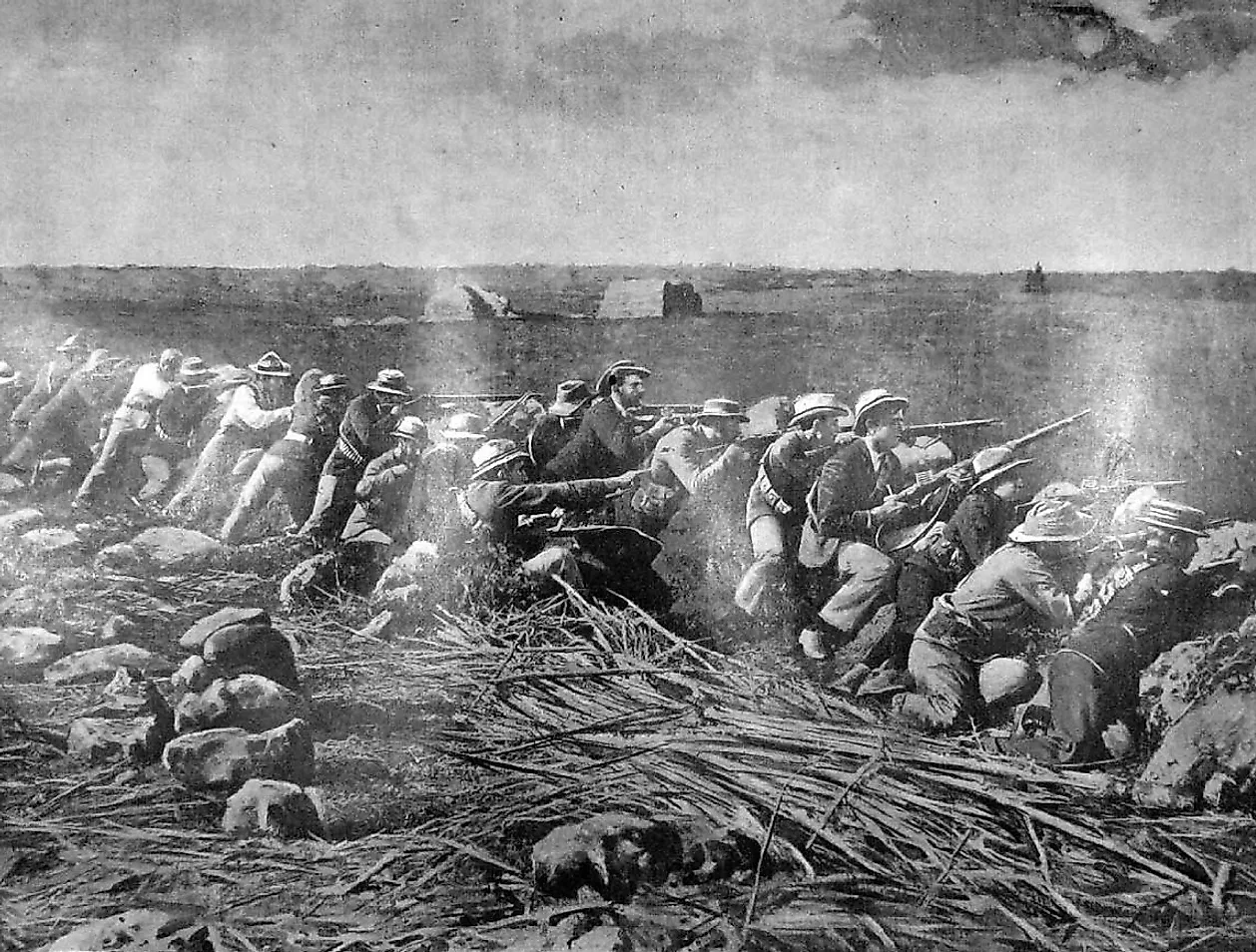The Siege of Mafeking: The Second Boer War

5. Background
The Siege of Mafeking was an engagement of the Second Boer War fought around the town of Mafeking, close to the border between then British South Africa and the then Boer Republic of Transvaal. The siege started on October 13, 1899, and lasted until May 17, 1900, when the town was relieved by British reinforcements. The objective of the Boers’ assault was to capture the important border town of Mafeking, which was a major railway hub between the cities of Kimberley and Bulawayo. By doing so, they hoped to upset prospective British attacks into the Transvaal Republic, while at the same time better positioning themselves to threaten the British Cape Colony itself.
4. Makeup
Commanding the British forces was Colonel Robert Baden-Powell, whose forces were made up of 500 men from the Protectorate Regiment, 300 men from the Bechuanaland Rifles and Cape Police, and 300 of Mafeking's citizens who could bear arms. Unusual for the time, he also armed 300 African men and organized them into a 'Black Watch'. Boys aged between 12 and 15 served as messengers and orderlies in the Cadet Corps to help release additional men to fight, which brought the total force of the garrison close to 2,000 men. The besiegers were led by General Piet Cronje, and counted more than 8,000 men organized in the traditional Boer commando fashion, with men from the same town grouped into a single unit. Both sides were armed with the most modern bolt-action rifles, like the 1898 Mauser for the Boers and the Lee-Enfield on the British side. The British made the most out of their technological superiority by deploying several Maxim machine guns through their trenches that inflicted considerable casualties on the Boer attackers. Both sides employed heavy artillery to shell the opponents' lines, and the British resourcefulness led them to adapt a railroad car as an armored personal carrier with which they successfully attacked the Boer camp.
3. Description
The mostly flat terrain around Mafeking offered the defenders a clear line of fire and lacked the higher ground nearby that would have boosted a Boer attack. General Powel chose to fortify the town by building several lines of trenches and setting up forts at regular intervals. With such a heavy concentration of defenses, General Piet Cronje decided to starve out the town instead of taking it by assault. Engagements through the siege were mostly limited to the occasional sniper killing a careless sentry, or an artillery bombardment intended to break the morale of the enemy.
2. Outcome
With the British relief force, commanded by Colonel Bryan Mahon, amassing in Kimberley, the Boers decided to launch an all-out attack on May 12th that was beaten back after heavy fighting. Five days later Mahon arrived at Mafeking and lifted the siege. The British lost 212 dead, and over 600 wounded. The Boers paid a heavier price with more than 2,000 men killed, wounded, or missing.
1. Significance
The siege of Mafeking was celebrated through the whole British Empire and the news of its relief brought hopes that the war could end soon. To the British, Mafeking demonstrated the power of the Empire even in the most remote corners of Africa, and its staunch resistance became a symbol of British courage and determination through the war and beyond. With Mafeking secured, and the Boer army besieging it scattered, the door was opened for the British invasion of the Transvaal that would result in the defeat and annexation of the Boer Republic into the British Empire. Though the war would last for two more years, Mafeking's resistance deprived the Boers from gaining a footstep from where to threaten Cape Colony, and so hastened the Boer defeat. The relief would be celebrated for years to come, both throughout the colony and back in Mother England. Baden-Powell would be treated as a hero much of the rest of his life, and go on to start the international “Scout” movement. Numerous other officers were bestowed with high honors by the British Empire as well for their service. The Mafeking Obelisk was erected a few years later to honor those who fought and died defending the town.











